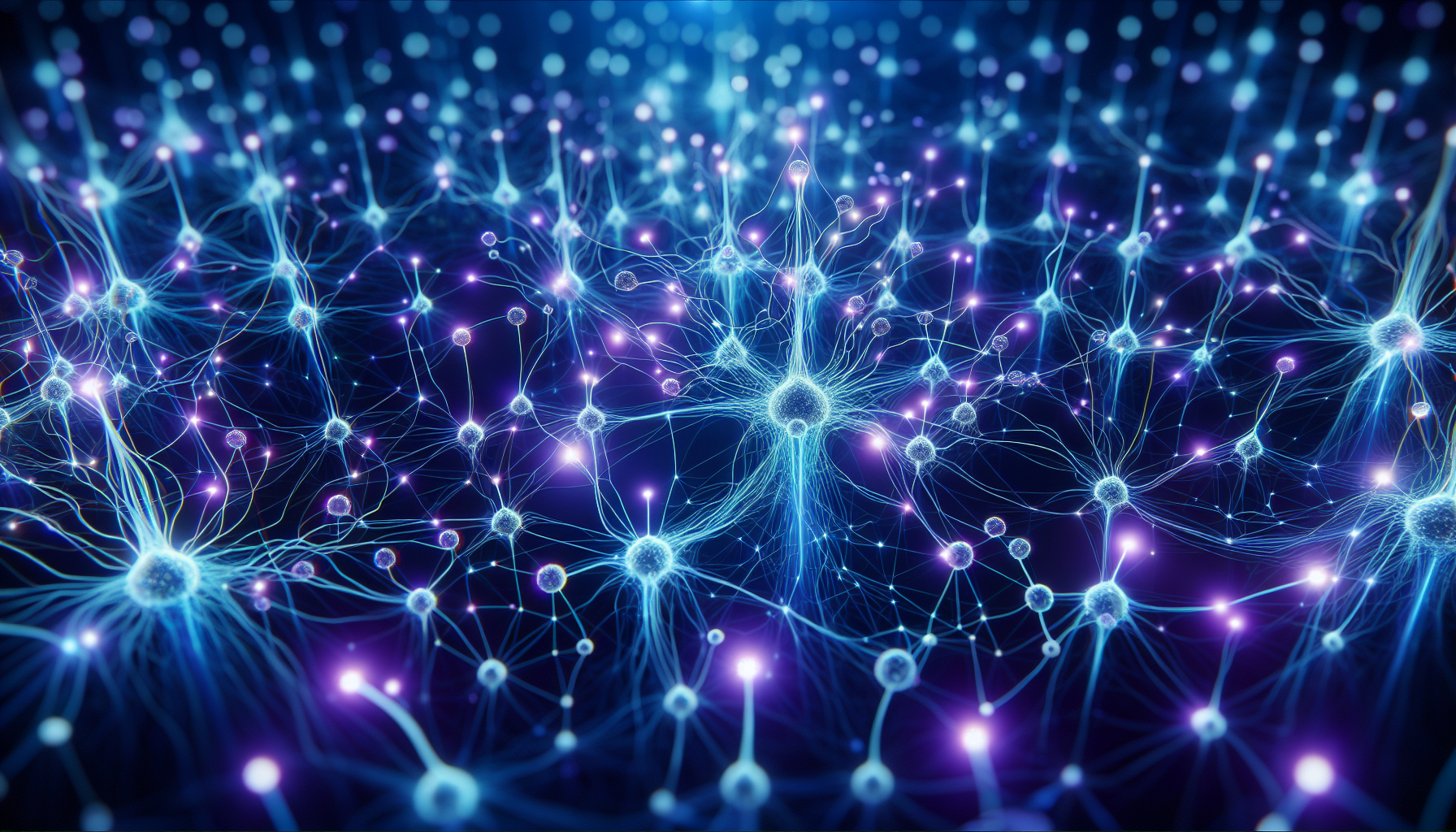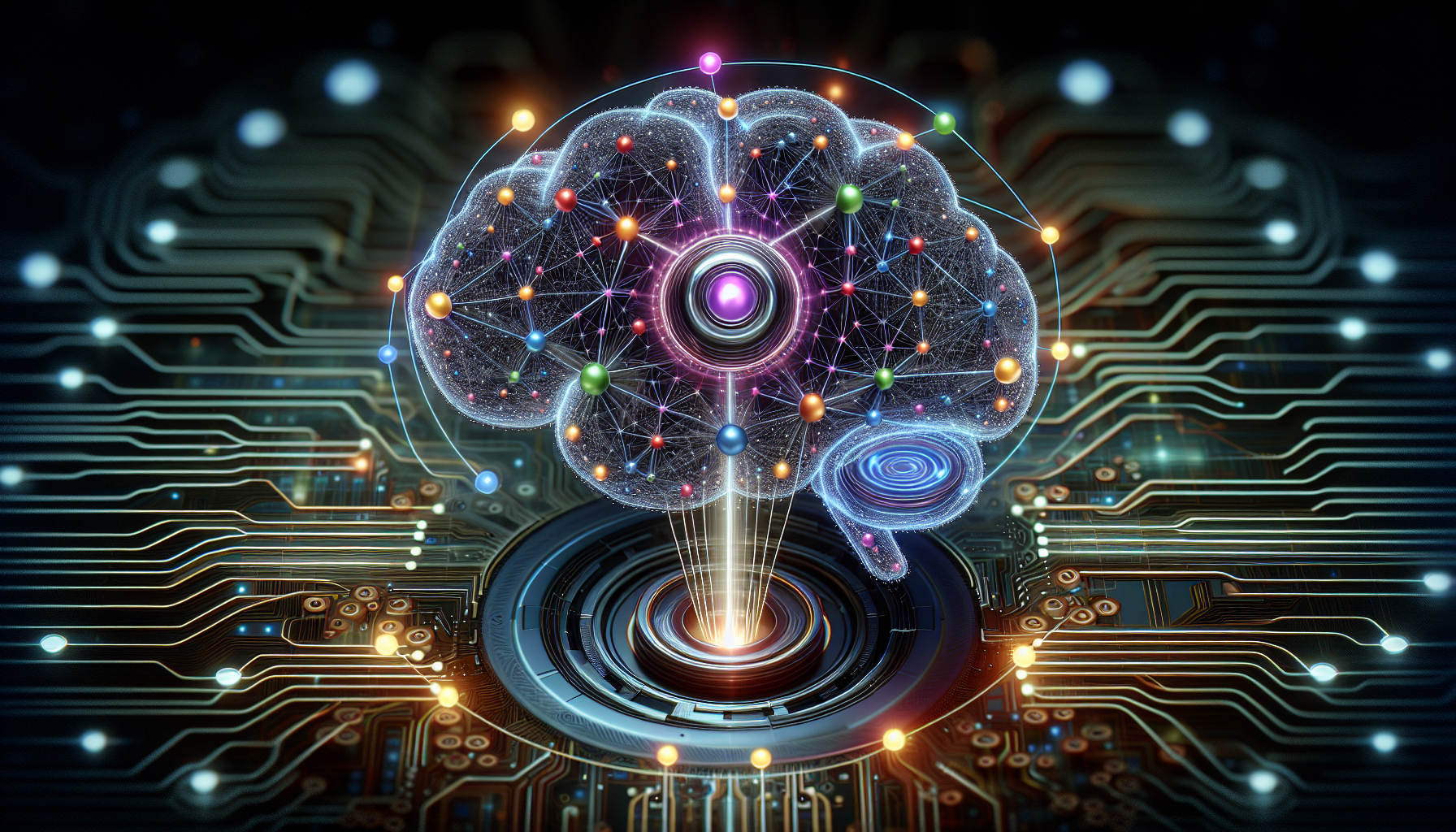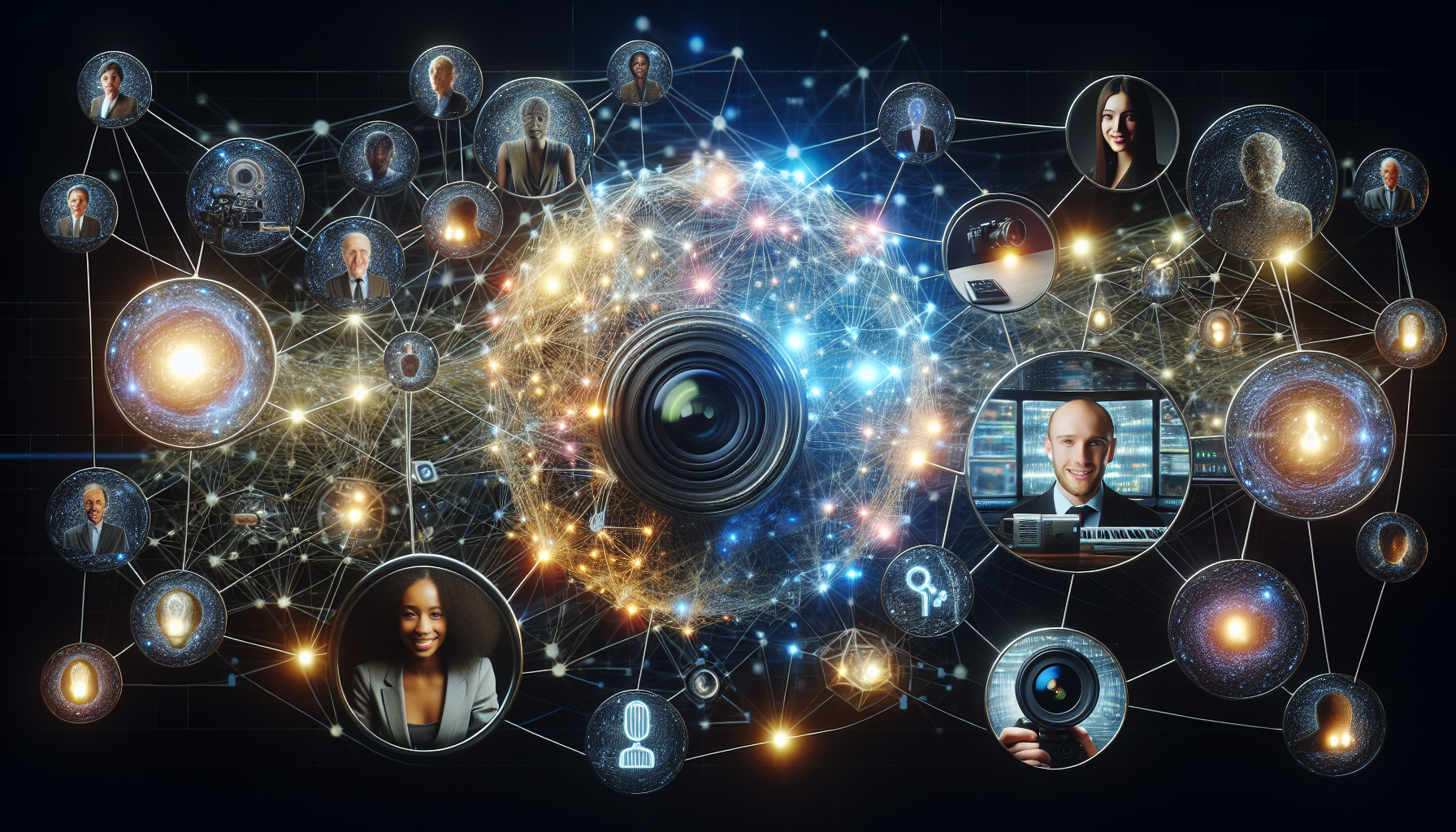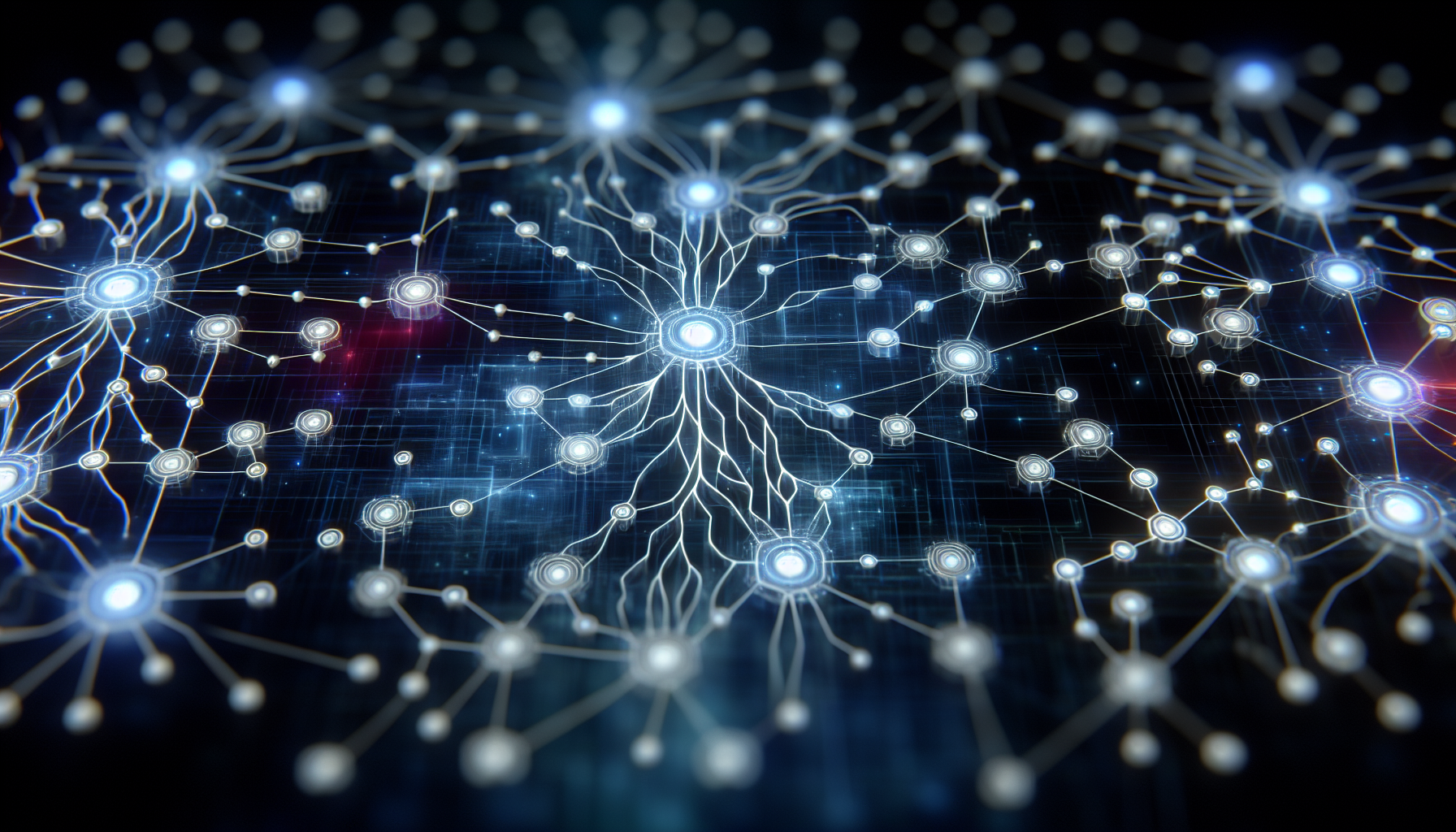A neural network is a cornerstone element of artificial intelligence, simulating the way the human brain processes information and learns from it. This powerful concept is what allows AI to ‘think’ and make decisions. If you’re questioning, “what is a neural network and what does it have to do with AI?”, you’re about to discover how these networks are the engines behind intelligent machines, and why they are so important in the ever-expanding field of AI.
Key Takeaways
Neural networks are computer models inspired by the human brain, consisting of interconnected artificial neurons that process data and adapt through learning, enabling them to execute complex tasks such as pattern recognition and language processing.
Applications of neural networks cover a wide array of fields, including natural language processing, image recognition, and speech recognition, facilitated by different types such as feedforward, recurrent, and convolutional neural networks.
Challenges facing neural networks include extensive training data requirements, potential bias in datasets, and the ‘Black Box’ nature, making their decision-making processes opaque and difficult to interpret.
Understanding Neural Networks

Imagine a computer model that mimics the human brain’s structure and functioning. This is a basic description of a neural network. Comprising interconnected artificial neurons, these networks receive external data, process it, and generate an ultimate result. Their ability to model complex systems and handle large datasets contributes to their versatility. Today, they accommodate diverse applications, from natural language processing to image recognition. Their resurgence in the 21st century is primarily attributed to advancements in hardware, as substantial computing resources are required to operate large and efficient neural network architectures.
But how do these networks learn? The learning process involves the network adapting to improve its performance on a task. It does so by adjusting weights to enhance result accuracy. A key advantage of neural networks is their ability to adjust to changing output patterns, which is particularly important when working with deep learning algorithms.
Artificial Neurons
Artificial neurons serve as the basic building blocks of neural networks. They receive inputs, process them using activation functions, and produce outputs that are either used for further processing or constitute the final results. The inputs for these artificial neurons typically consist of feature values from external data, such as images or documents, or outputs from other neurons within the network.
Activation functions significantly influence the output of an artificial neuron. They process the weighted sum of the neuron’s inputs and produce its output. This process typically involves a non-linear transformation, which introduces complexity and enables non-linear modeling. Weights play a fundamental role in artificial neurons, adapting during the learning process, impacting the magnitude of the input signals, and establishing the relevance of each input in the neuron’s output.
Layers and Connections
One can think of a neural network as a multi-layer cake. The input layer receives the information, and the output layer yields the final outcome. In between, there are one or more hidden layers responsible for data processing. That’s the basic structure of an artificial neural network.
In designing a neural network, the following considerations are crucial:
The number, type, and connectedness of network layers
The size of each layer and connection type
Hyperparameters, which need to be predefined, such as the number of neurons in each layer, learning rate, and various other parameters specific to different types of neural networks.
The Relationship Between Neural Networks and AI

Artificial intelligence (AI) refers to machines that mimic human cognitive abilities. Within this ambit, there are several key concepts to understand:
Neural networks: These are systems of synthetic neurons modeled after the human brain.
Machine learning: This is a subset of AI in which computers acquire knowledge from data.
Deep learning: This is a more specialized subset of machine learning that utilizes intricate algorithms and multiple layers of neural networks.
Understanding these concepts is crucial for grasping the field of AI and its various applications.
Artificial neural networks are a component of the machine learning domain. They are utilized for the modeling and resolution of intricate challenges. The term ‘deep’ in deep learning pertains to the depth of layers in a neural network, often exceeding three layers. This increased depth enables the handling of more intricate algorithms and larger data sets compared to conventional machine learning, making them deep learning networks. Among these, most deep neural networks are known for their exceptional performance in various tasks.
Machine Learning and Deep Learning
Machine learning, a branch of artificial intelligence, uses algorithms to extract insights from data, enabling software to improve its functionalities without explicit programming for every new task. Deep learning, a subset of machine learning, automates the extraction of features directly from raw data. Unlike traditional machine learning that often necessitates manual feature engineering, deep learning utilizes artificial neural networks with numerous layers to analyze intricate patterns in data.
Deep learning models are constructed using artificial neural networks that exhibit a sophisticated arrangement with multiple layers. These layers consist of interconnected nodes, creating a highly intricate network capable of processing complex patterns in data. Such models necessitate a substantially larger amount of data compared to traditional machine learning algorithms to achieve optimal performance. This is attributed to their intricate nature and the high level of abstraction they operate with, which requires extensive datasets for effective learning and generalization.
Types of Neural Networks

Just as there are various types of cars for different uses, neural networks also come in different types, each with its unique neural network architecture and designed for specific applications. Among these are feedforward neural networks, used in pattern recognition and classification tasks. They have the capability to transmit signals in a unidirectional manner from input to output layers.
Recurrent neural networks (RNNs) operate by preserving a memory of past inputs to influence subsequent outputs. This makes them suitable for tasks involving sequential or time-series data such as speech recognition and translation.
Then we have convolutional neural networks (CNNs) that are tailored for the processing of spatial information, making them efficient for tasks such as image recognition and various other computer vision applications.
Feedforward Neural Networks
A feed-forward neural network is one of the most basic forms of neural networks. It’s characterized by the flow of information in a singular direction, from input nodes, possibly through hidden layers, and finally to output nodes. Its key components consist of the input layer, potential hidden layers, and the neuron weights.
In a feedforward neural network, data follows a unidirectional pathway, beginning at the input nodes, passing through any hidden layers, and exiting through the output nodes, without any backward flow or cycles. These networks offer significant advantages in scenarios such as:
pattern recognition
classification tasks
dealing with non-sequential data
instances that are not dependent on their order.
Recurrent Neural Networks
Recurrent neural networks (RNNs) have a unique characteristic that distinguishes them from other types of neural networks. The processing nodes can save the output and then feed it back into the model for further analysis. This allows for iterative refining of the model based on the processed output. Each node in the RNN model acts as a memory cell, continuing the computation and execution of operations, allowing the network to maintain a form of memory.
RNNs are particularly suitable for time series data due to their ability to retain a memory of previous inputs and learn from previous iterations. This enables them to model the temporal dependencies present in the data, which is crucial for understanding and predicting time series events.
Convolutional Neural Networks
Convolutional neural networks (CNNs), often employed in image processing tasks, are a variation of multilayer perceptrons. They consist of one or more convolutional layers, which can be either fully connected or pooled. The primary characteristics of convolutional neural networks consist of a convolutional layer, a pooling layer, and a fully connected layer.
The function of convolutional layers within convolutional neural networks is to execute convolutions on the input data, extracting features, and learning spatial hierarchies. Their proficiency in tasks like facial recognition and is a consequence of their capacity to learn and discern intricate patterns.
How Neural Networks Learn
Neural networks learn by presenting input data along with labeled output data, enabling the model to adjust its internal weightings in order to make predictions for unseen data. The weights of the network are adjusted during the training process using gradient-based methods, such as backpropagation. These adjustments help to enhance the accuracy of the network’s results.
Supervised Learning
Supervised learning involves training neural networks using labeled data, aiming to minimize the discrepancy between predicted and actual outputs. Training a neural network with labeled data aims to reduce the discrepancy between predicted and actual results. The role of the loss function in the training process is to minimize the disparity between predicted and actual outputs.
Tasks such as pattern recognition or classification, and regression or function approximation, are suitable for supervised learning in neural networks. Therefore, supervised learning is a powerful tool for training neural networks to perform a variety of complex tasks.
Backpropagation
Backpropagation is a method used to adjust the connection weights in a neural network to compensate for each detected error during the learning process. Its importance in neural network training lies in its ability to facilitate the network in learning from its errors and adapting its weights and biases to minimize the disparity between the predicted output and the true output.
The mathematical framework supporting backpropagation involves the computation of the gradient of the loss function concerning the weights and biases of each unit in the network, and the subsequent adjustment of these parameters to minimize the cost function.
The primary procedures encompassed in the backpropagation algorithm include:
Forward propagation of inputs through the network to generate an output
Computation of the error by comparing the predicted and actual outputs
Backward propagation to distribute the error to all of the weights in the network
Updating the weights to minimize the error
These steps are repeated iteratively until the network reaches a desired level of accuracy.
Real-World Applications of Neural Networks

Neural networks find application in a wide range of real-world scenarios like natural language processing, image processing, and speech recognition. These AI systems are used to perform tasks such as sentiment analysis, speech recognition, information retrieval, and text classification among others. In the field of image processing, neural networks play a crucial role in driving progress. This encompasses tasks like facial recognition and is a consequence of their capacity to learn and discern intricate patterns.
Neural networks are fundamental to contemporary speech recognition systems, not only in the conversion of speech to text but also in facilitating more intricate functions like speaker identification. Apart from these applications, neural networks have had a significant influence on medical diagnosis, particularly in the identification of different types of cancers and the differentiation of cell lines based on shape, leading to earlier and more precise diagnostics.
Neural networks play a crucial role in cybersecurity by primarily focusing on:
Differentiation of normal and malicious activities
Malware classification
Identification of threat actors
Detection of security risk URLs
Botnet detection
Monitoring for credit card fraud
Lastly, in environmental contexts, neural networks are utilized, such as forecasting and mitigating floods, by proficiently modeling complex rainfall-runoff relationships.
Natural Language Processing
Artificial neural networks are essential for tasks such as text classification, sentiment analysis, and machine translation in the field of natural language processing. Frequently utilized types of neural networks in natural language processing encompass artificial neural networks (ANN) and recurrent neural networks (RNN).
Word embeddings have a function in the numerical representation of words and documents for the purpose of natural language processing with neural networks. These models examine the sequence of words in the sentence and acquire an understanding of patterns and connections between words in order to ascertain the sentiment conveyed in the sentence.
Image Processing
CNNs are known for their exceptional efficiency in image recognition tasks, particularly in areas such as:
Facial recognition
Text digitization
Handwriting recognition
Other advanced applications in image classification
Their proficiency in tasks like facial recognition is a consequence of their capacity to learn and discern intricate patterns.
Neural networks facilitate object recognition in images by segmenting the image into regions and utilizing a single neural network to predict bounding boxes and probabilities for each object within the entire image. In addition to CNNs, ANNs are widely utilized in image processing for tasks such as image classification, object recognition, and image segmentation, showcasing their adaptability in addressing diverse activities.
Speech Recognition
Artificial neural networks are utilized for activities such as speaker identification and converting speech to text in the field of speech recognition. Convolutional Neural Networks (CNNs) and Recurrent Neural Networks (RNNs) are frequently employed in speech recognition systems.
The accuracy of neural networks in speech recognition has experienced significant improvement over time, leading to more precise, dependable, and widely accessible speech recognition systems. Groundbreaking research has demonstrated substantial enhancements in accuracy through the use of deep neural networks (DNNs) in comparison to conventional methods.
The procedures required for utilizing a neural network for speech-to-text conversion involve:
Converting an audio file into text
Importing a library for speech recognition
Initializing the recognizer class for voice recognition
Processing the audio data
Challenges and Limitations of Neural Networks
Despite their capabilities, neural networks also have their fair share of challenges. One of the biggest challenges is the requirement for extensive amounts of training data to perform effectively, particularly in practical operations like robotics. Dataset bias can result in discriminatory outcomes in neural network applications, particularly in areas like facial recognition, hiring, and law enforcement, where the accuracy of data significantly influences the decision-making process.
To address these challenges, synthetic data can be used to supplement training datasets to enhance diversity and representation, thereby aiding in the reduction of dataset biases and the improvement of the fairness and robustness of neural networks. However, another constraint of neural networks is the opaque nature in which the decision-making process is not readily interpretable. This gives rise to concerns about transparency and accountability in AI systems.
Training Data Requirements
Training data forms the foundational dataset used to understand how to apply technologies like neural networks for learning and predicting purposes. The necessity for large amounts of training data for neural networks arises from the large number of parameters that need to be learned from the data. Insufficient data may hinder the neural network’s ability to accurately learn underlying patterns and make precise predictions.
The quantity of training data required for a neural network is contingent upon the complexity of the problem and the algorithm selected. The diversity of training data exerts an influence on the accuracy of neural networks by affecting the model’s ability to generalize. This can have an impact on both accuracy and robustness.
Interpretability and “Black Box” Nature
The ‘Black Box’ problem in neural networks pertains to the absence of comprehension regarding the collective functioning of individual neurons in making decisions, presenting a difficulty in unraveling the intricate internal mechanisms of these models. The opaqueness of neural networks, characterized by the non-transparent decision-making process, presents obstacles for accountability. The intricate network structure, with its multitude of neurons processing data and forming complex connections, can inadvertently introduce bias and inequity, profoundly influencing decision-making practices.
Interpretability in neural networks holds significance as it serves as a critical debugging tool for detecting biases in the learning models. This contributes to enhanced transparency and can facilitate more informed and equitable decision-making across various applications.
Future Directions and Advancements in Neural Networks

The field of neural networks is consistently evolving, with ongoing progress and new directions coming to light. For instance, Generative Adversarial Networks (GANs) and neuromorphic computing are some of the exciting developments that are propelling the growth of neural networks.
Apart from GANs and neuromorphic computing, a range of innovative architectures and techniques are being developed in the realm of neural networks. These advancements have the potential to introduce new paradigms for learning and problem-solving, thereby expanding the capabilities of machines and the practical applications of AI.
Generative Adversarial Networks
Generative Adversarial Networks (GANs) belong to a category of machine learning frameworks used for unsupervised learning. They comprise of two sub-models: the generator and the discriminator, which are simultaneously trained in a competitive environment. GANs are rooted in a deep-learning generative model and are a prominent framework for generative AI.
Generative Adversarial Networks operate by employing a generator to produce synthetic data that is initially inauthentic, while a discriminator is trained to distinguish between genuine and synthetic data. This adversarial process results in the generator progressively generating more realistic data.
The primary function of the generator is to produce synthetic data that closely resembles real data, while the discriminator’s primary function is to accurately differentiate between real data and the synthetic data generated by the generator.
Neuromorphic Computing
Neuromorphic computing is an emerging field in neural network research, aiming to create hardware that mimics the structural and functional attributes of the human brain. This approach holds the potential to generate neural network implementations that are more efficient and robust, thereby reshaping the capabilities of AI systems.
Neuromorphic computing distinguishes itself from traditional computing architectures, like von Neumann architecture, through the integration of memory and processing units, replicating the parallel processing and interconnectedness observed in neurons. This approach allows for:
Simultaneous execution of multiple tasks
Processing information in a more natural and efficient manner
Reduced power consumption
Enhanced speed when compared to conventional architectures.
Summary
As we’ve seen, neural networks are intriguing models that emulate the human brain’s structure and functioning. They are a key part of AI, particularly within the domain of machine learning, and play a crucial role in a multitude of real-world applications, including natural language processing, image processing, and speech recognition. Despite the challenges and limitations they face, such as the requirement for large amounts of training data and the “black box” nature of their decision-making processes, their potential for future advancements and novel applications is undeniable.
Generative Adversarial Networks (GANs) and neuromorphic computing represent some of the exciting directions for future advancements in neural networks. As research and technology continue to progress, we can expect to see even more innovative architectures and applications emerging in this dynamic field. Ultimately, the journey of exploring and understanding neural networks is an ongoing one, full of both challenges and exciting possibilities.
Frequently Asked Questions
What is a neural network in artificial intelligence?
A neural network in artificial intelligence is a system that uses interconnected nodes or neurons in layers to process data, mimicking the human brain. It is a type of machine learning known as deep learning.
What is the relationship between AI and neural network?
Neural networks are a subset of AI, specifically designed to mimic the human brain’s architecture and process data in a human-like manner through interconnected nodes or neurons in layered structures. Artificial intelligence, on the other hand, encompasses a broader field focused on creating intelligent systems capable of human-like intelligence.
How does a neuron work in AI?
In AI, an artificial neuron simulates a biological neuron by adding up input values, and if the sum exceeds a threshold, it sends a signal to the output. This process continues through layers of neurons to produce an output.
What are the applications of AI in neural networks?
Neural networks, a type of AI, are applied in various fields such as image recognition, speech recognition, and medical diagnosis. Their ability to learn from data sets is a key advantage in applications like function approximation.
How do neural networks learn?
Neural networks learn by adjusting their weights and biases based on training data, using techniques such as supervised learning and backpropagation. This allows them to improve their ability to make accurate predictions and classifications.

Comments